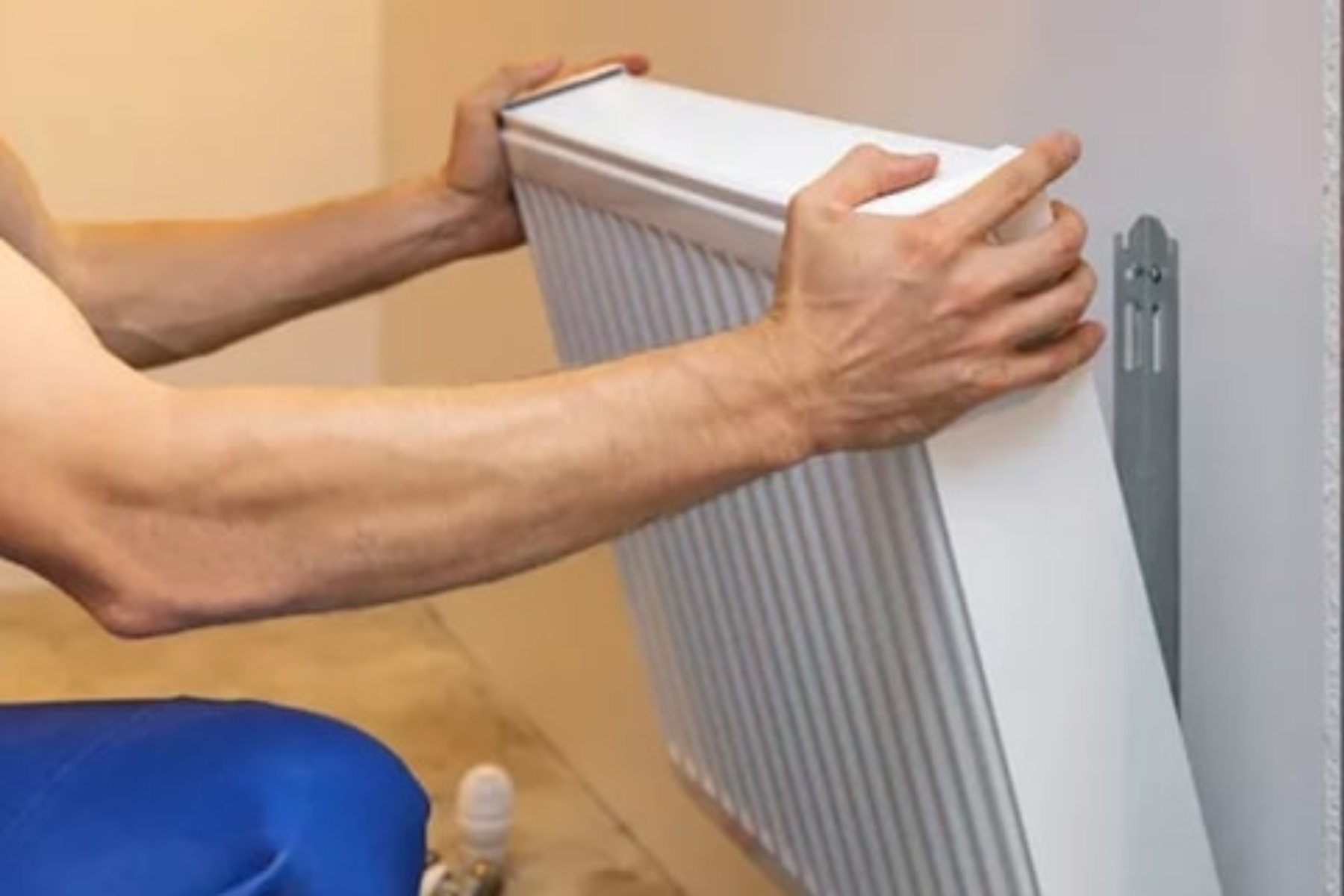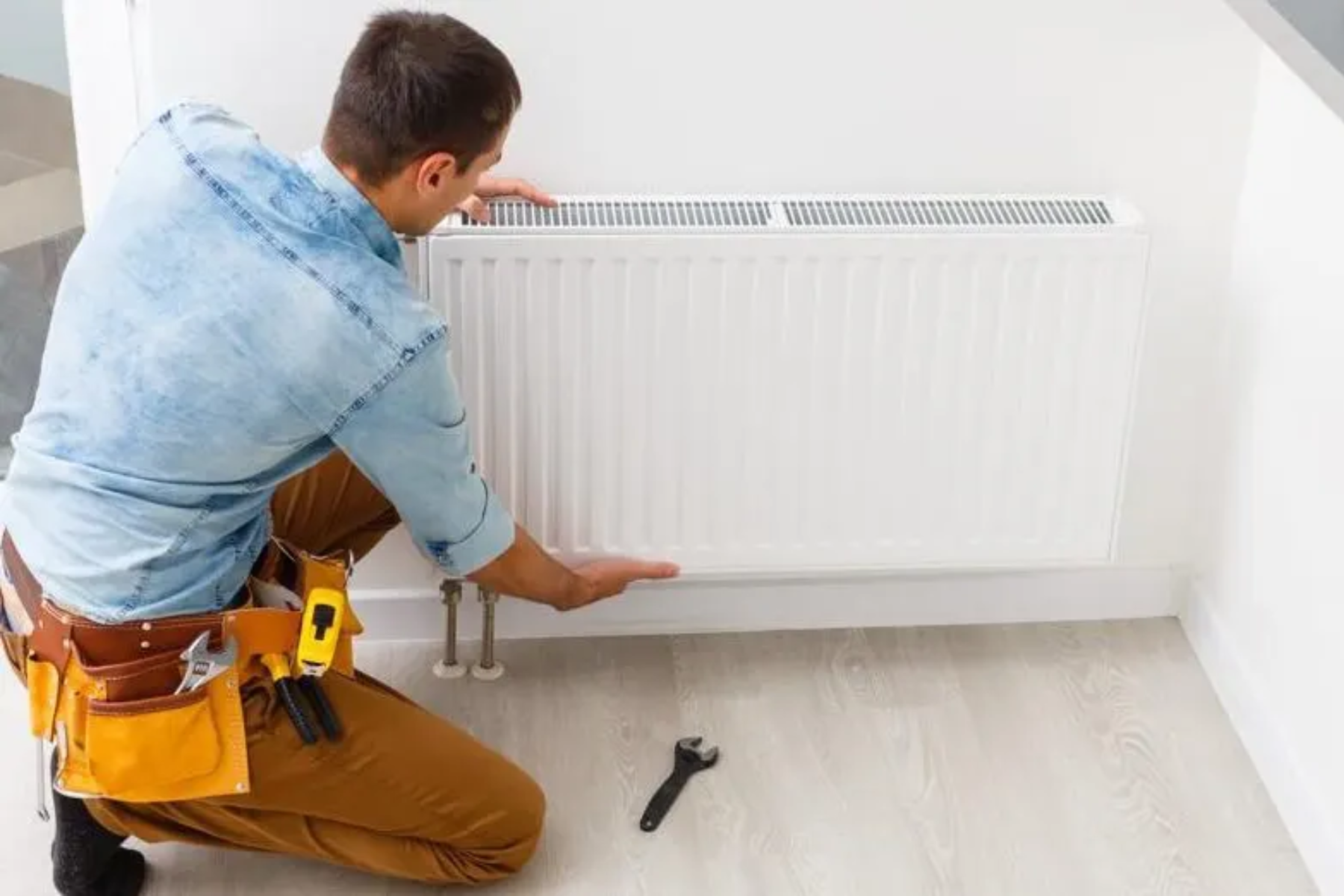Radiators used to be seen as items of necessity - ruled by function over style. But designs have changed hugely over the last 20 years. With a vast range of radiator styles on the market today, modern-day radiators can make statement pieces in every household.
In fact, radiator replacements can completely transform your space, like changing a wall colour or adding a new piece of furniture. So, wouldn’t it be great if replacing your radiator was as easy as making any other decor change? Well, now it can be with this handy guide on how to hang a radiator. If you’re not sure which radiator to buy, check out our Essential Radiator Buying Guide for inspiration.
Keep reading for your essential step-by-step guide to hanging a radiator. Say goodbye to those drab rads, and hello to designer style
What You'll Need To Hang A Radiator:
- Hose
- Tarpaulin Sheets (or equivalent waterproof sheeting)
- Spanner
- Screwdriver
- Drill
- Tape Measure
- Spirit Level
- PTFE Tape
- Corrosion Inhibitor
- Radiator Valves
- Rawl Plugs
- Radiator
- PPE
What To Do Before You Hang A Radiator?
1. Turn off your water supply
Switch off your boiler at the mains. This vital step will avoid any nasty surprises when you remove and install your radiator.
Then, identify the isolation point. In UK homes, the isolation point is typically the stopcock which blocks new water from entering your heating system.
The stopcock can be found in a variety of different places depending on the age and area of your home. A stopcock is usually found under the sink, in the loft, or near your water tank.
2. Drain your heating system
Once your heating system is switched off, you will need to find the drain-off valve. This valve is usually found near the bottom of your boiler. The location can vary depending on the age and area of your house.
To fully drain your heating system, place a hose over the valve and point it somewhere to drain (e.g. sink, drain, or bath etc). Don’t forget to put your tarpaulin sheets down before completing this step incase of any overspill.
3. Remove your old radiator
Now your heating system is completely drained, you can remove your existing radiator. To disconnect your radiator from the pipes, unscrew the valve and the nut which connects the radiator.
Standard and designer radiators usually rest on their brackets. Once your radiator is disconnected, lift it up and away from the wall. Then unscrew and remove the brackets from the wall.

How To Measure And Hang A Radiator Bracket?
To ensure you’re happy with the fit of your new radiator, carefully measure the dimensions first.
1. Measure the height of your radiator from your floor.
2. Measure the height of your radiator from the floor.
3. Measure the distance between your pipe inlets (where you’ll need to attach the radiator to your heating system).
4. To measure radiator brackets, sketch an outline which matches your existing pipework. Mark the wall directly, so you needn’t remember the measurements. This template will allow you to position the radiator and affix your radiator brackets.
5. Use a spirit level to check your measurements are completely straight before you start drilling.
6. Follow your instruction manual to install your brackets:
- Drill holes in the correct places according to your measured outline
- Affix the brackets to the wall using the fixing kits provided
- Gently place your radiator onto the brackets, ready for the next step!
If you're unsure which way up your radiator brackets should go, refer to the instructions provided. All radiator brackets are slightly different. But the measurement process should be the same.
There Are A Few Things You May Be Wondering When It Comes To Radiator Brackets
Are Radiator Brackets Standard And Do Radiators Come With Brackets?
At Bathroom Takeaway, all of our radiators come with brackets meaning they are standardised across our ranges. However, the brackets vary depending on radiator style and size.
What Size Screws For Radiator Brackets Are Needed?
All of our radiators also come with fixing kits. These kits include screws, rawl plugs, and other parts you might need like air vents and blanking plugs.
You should follow your instruction manual to install your radiator brackets. However, brackets should be affixed to the wall at a point where they are distant from the pipes, ground and each other.

How To Install Your New Radiator:
Firstly, check whether your existing radiator is the same size as your new one. If the pipe centres are in the same place (the distance between two pipe inlets), you can simply replace your radiator new for old. Connect the new radiator without any amendments. If not, a professional may need to move some pipework for you.
We recommend purchasing new radiator valves when installing a new radiator. Alternatively, if you’re using existing valves, get them ready now:
1. Use a nut and olive to attach your valves to the existing pipework, ensuring they are adequately secured using a spanner.
2. Grab your PTFE tape to wrap tightly around the end of the valve a few times. This step will ensure the valve is secured and fits snugly.
3. Triple check all connections to ensure they are secure and tight before moving onto the next step.
4. Once your radiator is securely attached to your valves and pipework, it’s time to fill it! Ensure your drain off valve is shut, then find the dedicated fill point in your central heating system. This is usually at a high point in your pipework but can vary based on age of house and area.
Refill the system (slowly!) until your boiler shows your optimum pressure. Close the fill point, release your isolation and turn on the boiler.
If you’ve had no pressure blow outs and you are still dry (for the majority), then congratulations! You’ve just successfully installed a new radiator!
Feeling confident and think you can replace a radiator yourself? Check out our full range of radiators to see which one takes your fancy to make a heating statement.
>DIY is a great way to save on the installation costs. However, we recommend you should always hire a qualified professional to install your products. Our instructions outline the general steps involved in fitting a radiator. Always refer to the instruction manual for your specific model and don’t attempt full installation without the necessary help or training.
For more expert advice, explore our guides to bathroom installation.






















